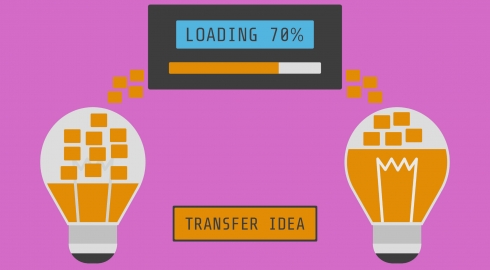Creative may be the last thing you’d call yourself, but we all have the potential for ‘out of the box’ thinking and now’s the time to lift the lid (don’t worry – it’s easier than it sounds).
Creativity is all about original ideas and inventiveness. We tend to crunch it down into whether a person can paint, draw, write or perform. However, as creativity coach Laura West sees it: “It’s not about being artistic as much as being curious, allowing your unique imprint to be put on something.”
And it’s by cultivating that unique imprint that a business and those who work in it can differentiate themselves in today’s competitive markets. In short, to quote Gerard Puccio, chair of New York’s International Center for Studies in Creativity, “It’s about survival.”
Why is creativity essential in business?
Unless you work in a creative industry, it may be hard to see where creativity fits into your business. But innovative, imaginative, inventive thinking has a place in negotiations, customer relationships, third-party arrangements and joint ventures, internal and external comms, staffing, revenue agreements and problem solving across the board. It’s key to economic growth.
In a 2010 IBM study of CEO’s around the world, creativity was voted the most important quality for navigating the complexities of the business environment, ahead of integrity, global thinking and influence!
By rigidly following the same patterns and processes, we contract and limit our thinking, missing opportunities or ways to improve and take a role or organisation to the next level – and we’re less likely to see new risks that may have arisen.
Puccio believes that we need to force the brain out of a purely analytical state in which it tends to focus on one solution and ignore other possibilities. Do this, he asserts, and you’re more likely to make the mental leaps that give you a new perspective on an existing challenge.

Introducing more creativity into the workplace could mean employees choosing how and where they want to hold a meeting, flexible working hours and the chance for mental ‘time out’ on other projects or facilitating collaboration with whiteboards, brainstorms and break-out areas. Creativity happens less in solitary confinement behind a PC and more when ideas converge – as Steve Jobs said creativity is “just connecting things”. But it’s up to business leaders to create the environment where this can happen.
The buck stops at the top
Employers play a key role in giving their employees the freedom and support to think and act boldly with the flexibility that creativity provides.
“I’ve seen creative-thinking high flyers join non-creative corporates and have their creative spirit crushed and confidence destroyed,” says Diane Rivens, Director of Juicy Marketing. “If the company leadership isn’t creative this usually filters throughout an organisation with employees too scared to think differently – and yet those who dare win!”
According to Alan Iny, co-author of Thinking in New Boxes: A New Paradigm for Business Creativity, “true leaders must 
It’s often a fear of failure and ridicule that stops people going out on a creative limb. It’s also about an employer or organisation’s attitude to risk. How willing are they to step out of their comfort zone – and support employees in doing the same?
Finding creative confidence
For a working environment to nurture innovative thinking, employees must feel safe and supported enough to turn off the road most travelled and suggest alternatives.
Author, speaker and founder of IDEO, David Kelley says, “When people gain creative confidence, we see them come up with more ideas … and just make better decisions.”
One of the most powerful ways to develop this creative confidence is to build strong, mutually supportive teams founded in the value of thinking differently. PYE Global runs corporate training sessions to do just that.

Think you’re not creative?
According to Wanbrough, creativity is a muscle we all have – it just needs exercising. Here are four ways to work yours…
- Be curious and question. Challenge your current perspective.
- Pay attention to the world around you. Make notes when thoughts occur, collect stimulus material (whether that’s a web link, customer feedback or a snippet of conversation) and be open to answers coming from unexpected places.
- Embrace uncertainty. Creativity requires stepping away from the known and into the unknown. It’s not something you control.
- Use prompts. Try Thinkertoys by Michael Michalko, Brian Eno’s Oblique Strategies cards or simply put your ideas down in different ways, such as mind mapping or A2 scribbles.
everywomanTrends is an article series focusing on the newest thinking and popular discussions around all things related and of interest to women in business. If you have an idea for an everywomanTrend article you can get in touch with us at [email protected].







